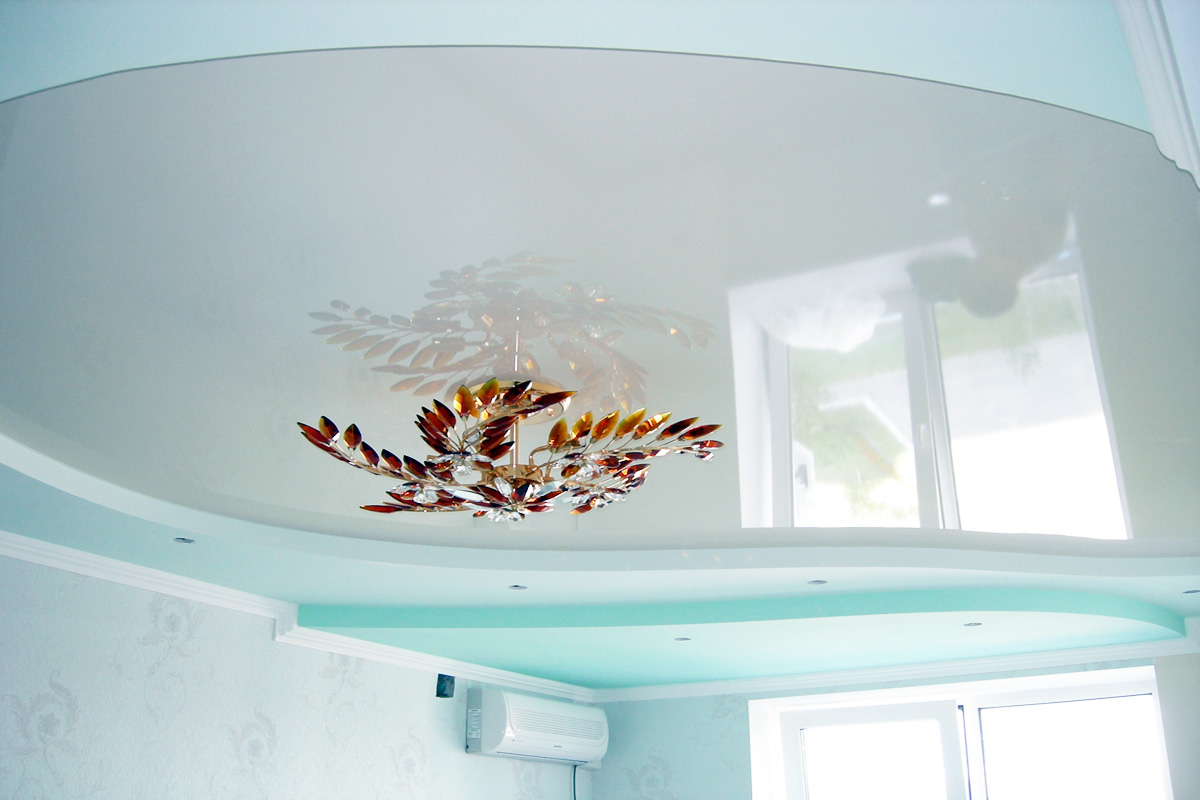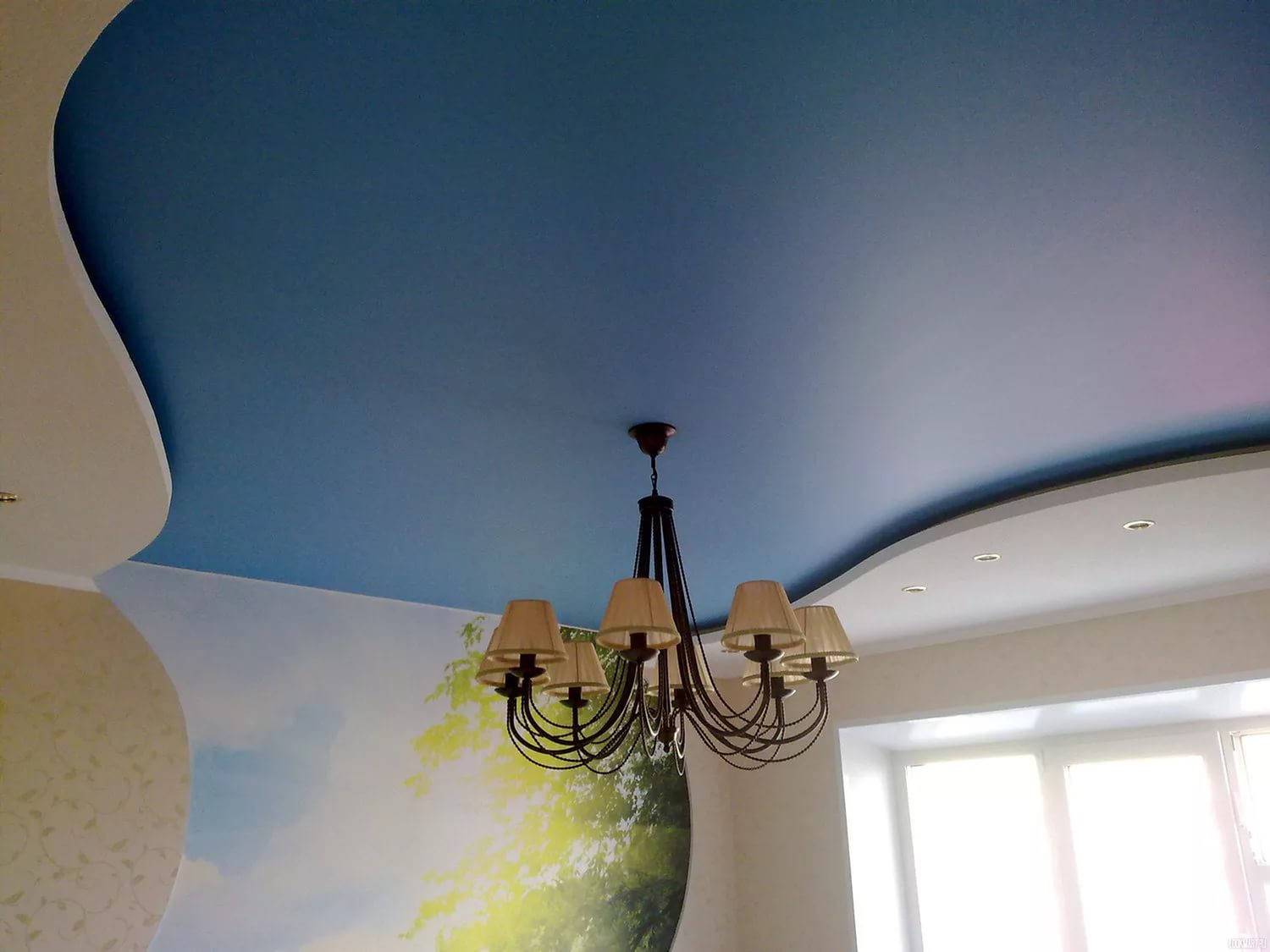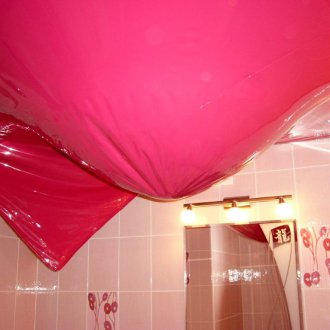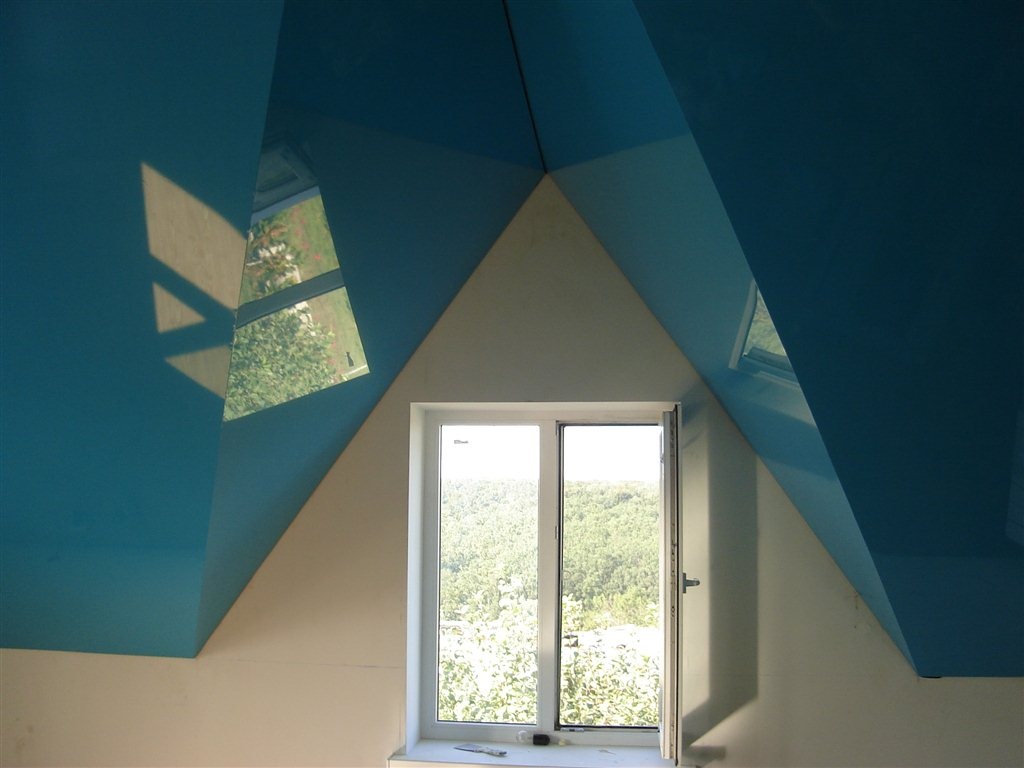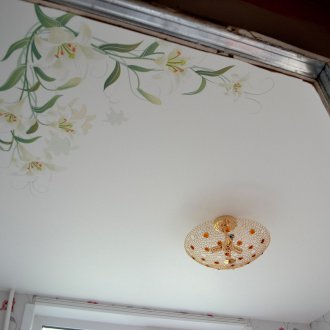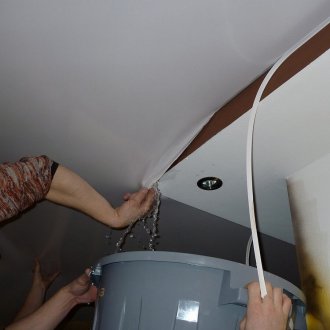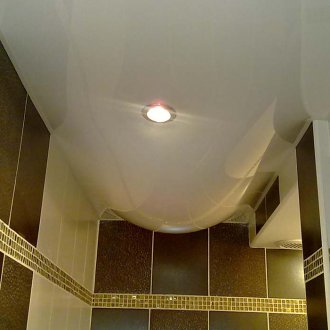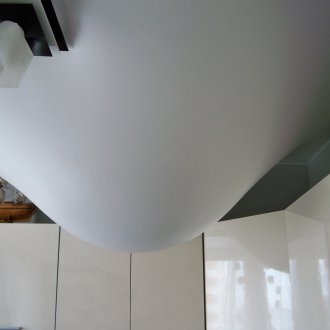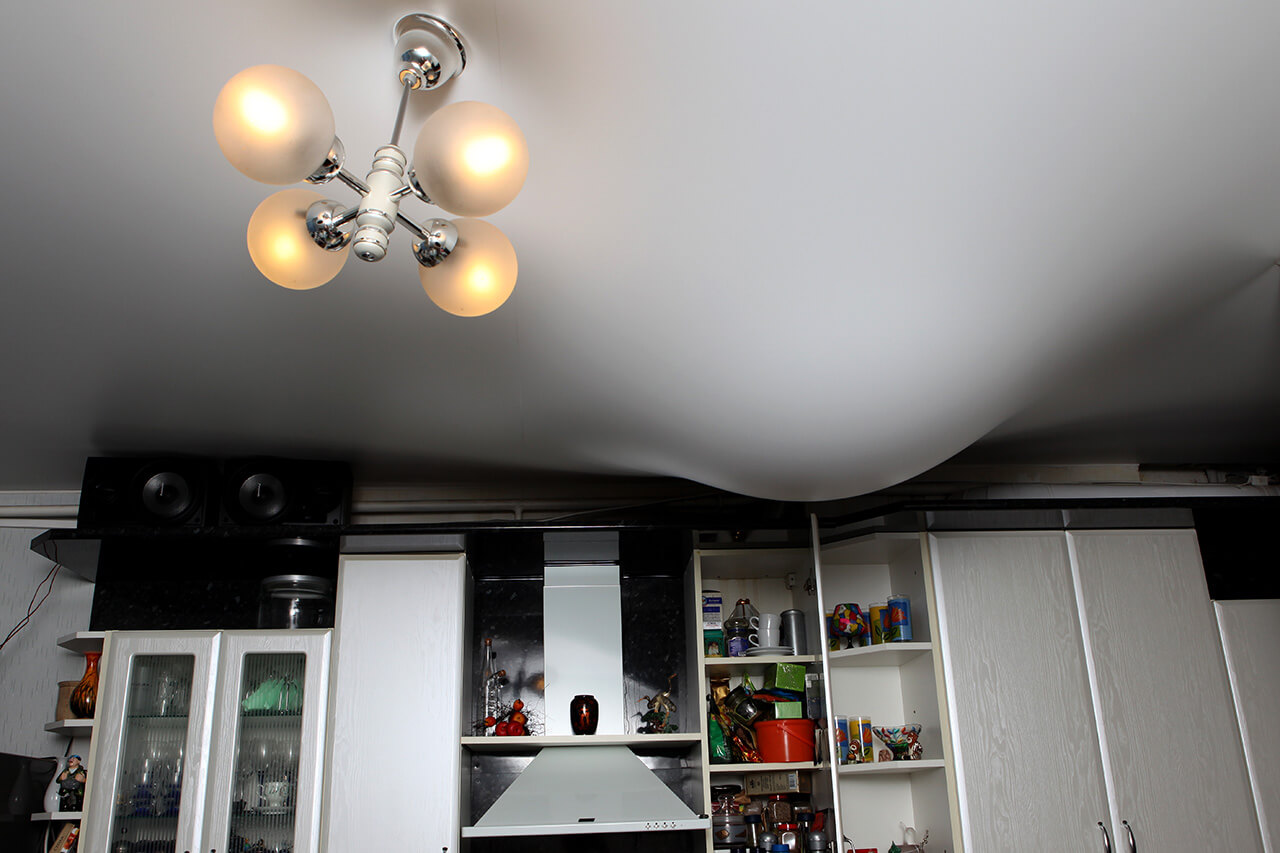How to drain water from a stretch ceiling?
Content
Stretch ceilings are a modern trend, a tribute to fashion, but in addition to beauty, they also have the property of successfully resisting floods, and this will already be of great practical importance if the neighbors have problems with plumbing, for example, or the roof suddenly starts to leak during heavy rain your house.
Unexpected water in the apartment, even if it doesn’t pour from a stream on top, but only falls in separate drops, can completely spoil the results of a new repair and recently bought expensive furniture. However, in cases where you have mounted a suspended ceiling, everything may not be so catastrophic.
Will any stretch ceilings save if the neighbors flooded?
Some companies specializing in the installation of suspended and suspended ceilings praise the latter, attributing them the ability to retain water, but this statement is only partly true - it all depends on the material of the canvas used in the manufacture of the stretch ceiling. If this is a fabric with a special waterproof coating, then in this case the waterproofness of such a cloth is a very relative concept. The fabric ceiling is able to resist flooding for some time, but after an hour or two, the liquid will inevitably begin to ooze through its surface.
If you suddenly flooded the stretch ceiling from the fabric, then you still have to completely change it. It is impossible to repair it: even if it is possible to completely drain the water from a stretch ceiling of this type, noticeable ugly stains and multi-colored spots will remain on its surface, which are unlikely to be washed off.
That is why you should not install a fabric suspended ceiling in those rooms where it is highly likely that it will be flooded with neighbors from the top floor in the event of an accident with water supply in the kitchen or in the bathroom. It is better to equip such rooms with a ceiling made of PVC film, since a polyvinyl chloride film can withstand the weight of one hundred liters of water, without missing a single drop.
Of course, the vinyl ceiling can stretch very much, forming a large bubble, but the film still does not tear, it is so durable. The risk of a gap increases greatly if you are flooded with hot water - the film from heating can stretch so much that it touches something sharp, such as a corner of the furniture. However, the presence of hot water on your ceiling is an unlikely event, since as long as it passes its way to your apartment, it will most likely cool off significantly.
Vinyl ceiling has a wonderful property: if you lower the water from it, then it can restore its shape.
What to do when water is found on a stretch ceiling?
First of all, you need to turn off the electricity in the apartment by removing the plugs or by setting all the toggle switches of the circuit breakers to the “OFF” position on the distribution panel.
The next mandatory event is to establish the cause of the flooding and stop the development of the flood. For this, it may be necessary to turn for help not only to neighbors, but also to utilities or even EMERCOM employees.
What to do next?
- Cover furniture with any water-tight film, such as polyethylene.
- Remove valuables and expensive equipment from the flooded room.
- Call the company that completed the installation of your suspended ceiling: its specialists installed the ceiling, and therefore they are best aware of its design features and the specifics of your room (room size, location of the electrical cable, ways of mounting lighting fixtures).
How can I drain or pump water from a stretch ceiling myself?
Through the corner
There may be a situation where you need to immediately start draining water from the ceiling. If there are no lamps on the ceiling, then you can try to drain the water through the corner closest to the "bubble". To do this, remove the baseboard, prying it, for example, with a screwdriver and using a spatula to pull out a piece of the cloth from the baguette. Remember to stock up on a pair of buckets or large basins to receive pouring water. In this case, the water must be carefully “adjusted” to the place of discharge with your hands or with the wide end of the mop. The complexity of this method lies in the fact that, balancing on a table, chair or stepladder, you have to work with a heavy canvas for a rather long time.
Through the holes into which the lighting fixtures are inserted
Drainage of water from a stretch ceiling is also possible if there are holes in the canvas for ceiling lights. To complete this procedure:
- remove the lamp closest to the bubble;
- insert a rubber hose of sufficient length into the hole and lower its second end into a previously prepared water tank;
- drain the water, and then dismantle the remaining lamps;
- after they dry the ceiling, you can install all the light sources in their original places.
Some tips for those who try to independently repair the suspended ceilings after the bay:
- Start by turning off the power: water entering the wires and fixtures can cause a short circuit that can cause a fire.
- You can’t try to pierce the vinyl ceiling, hoping that through the “small hole” water gently drains into a framed bucket. Under the powerful pressure of water, a small hole can turn into a “huge hole”, or an “inflated” canvas can even burst, like a balloon, when they try to pierce it with a thin needle. In this case, the ceiling repair can only be carried out by replacing its old canvas with a new one.
- It is not recommended to arrange “waves” with a small bay and try, without draining the water, to simply distribute it inside on the surface of the canvas. The remaining moisture can cause the development of fungi and mold in the sub-ceiling space, which in turn can harm the health of residents.
- Do not try to dry the ceiling with a household hair dryer to restore its original smooth surface. It's useless. Such work can only be done using professional equipment: a hair dryer or industrial heat gun.
- The scale of the problem must be properly assessed. With a large amount of water, not only professional drying of the PVC canvas, but also the concrete ceiling itself, as well as the processing of all elements and surfaces with antiseptics, may be required. It may also be necessary to restore the plaster so that its crumbling and damaged pieces do not “shine” through a translucent or transparent canvas, if you have one.
- You should be extremely careful when working with boiling water. It is dangerous and unhealthy, especially if you do not have thermal gloves.
- It is worthwhile to seek help from specialists if water has accumulated on the seam of the panel or caused such a strong sagging that the canvas is in dangerously close to the sharp corners of the cabinets or shelves.
Thus, you should not drain the water yourself from the flooded ceiling, since, most likely, you do not have the necessary equipment. If serious mistakes are made during operation, the ceiling may become unrepairable, and huge volumes of already “your” water that have spilled onto the floor can cause flooding from below for your neighbors, who will probably not only be very dissatisfied, but also possibly present their financial claims.

